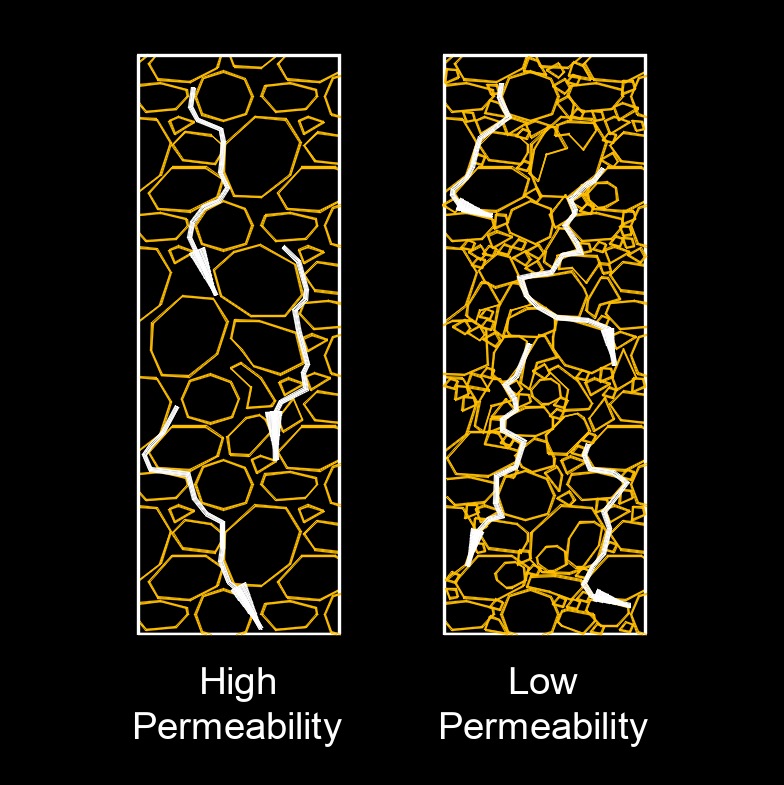Permeability Coefficient
Permeability Coefficient Formula |
||
|
\( k \;=\; n \cdot v \) (Permeability Coefficient) \( n \;=\; \dfrac{ k }{ v }\) \( v \;=\; \dfrac{ k }{ n }\) |
||
| Symbol | English | Metric |
| \( k \) = Permeability Coefficient | \(ft \;/\; sec\) | \(m \;/\; s\) |
| \( n \) = Porosity | \(dimensionless\) | \(dimensionless\) |
| \( v \) = Velocity of Water Flowing Through Pores | \(ft \;/\; sec\) | \(m \;/\; s\) |

Permeability coefficient, abbreviated as k, also called coefficient of permeability, is a measure of how easily a substance can pass through a barrier or membrane. It quantifies the rate at which a particular substance can move across a membrane or material under a specific set of conditions. Permeability coefficients are commonly used in various scientific and engineering fields, including biology, chemistry, physics, geotechnical, and environmental science. The units of permeability coefficients can vary depending on the context and the specific substance being studied.
In biology and physiology, for example, permeability coefficients are frequently used to describe the movement of ions, molecules, or gases through cell membranes. The permeability coefficient provides insight into how readily these substances can cross the lipid bilayer of the cell membrane, which is essential for various cellular processes.
The permeability coefficient can be influenced by factors such as temperature, concentration gradients, membrane thickness, and the properties of the substance itself (size, charge, solubility). It is often determined experimentally through techniques like diffusion studies, where the rate of substance movement through a membrane is measured over time. A higher permeability coefficient indicates that the substance can pass through the membrane more easily, leading to a higher flux for the given concentration gradient.
Permeability coefficients are used to understanding processes like osmosis, drug transport across cell membranes, and the diffusion of gases in and out of cells. Scientists and researchers use these coefficients to model and predict how substances move through various materials and barriers, contributing to advancements in fields such as drug delivery, physiology, and materials science.

